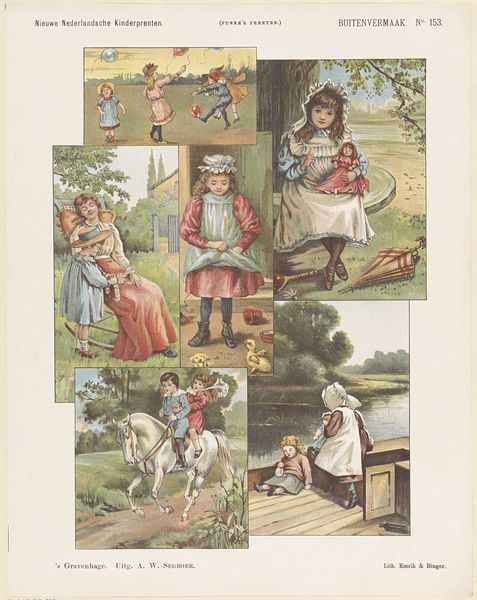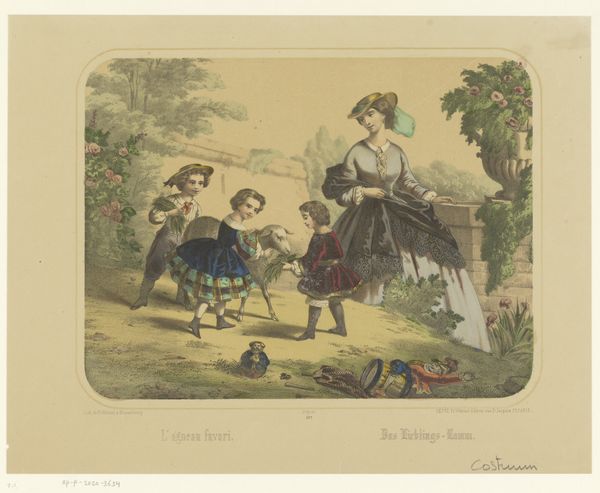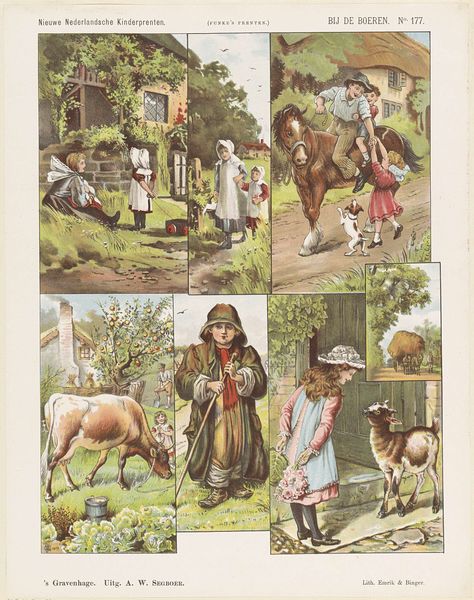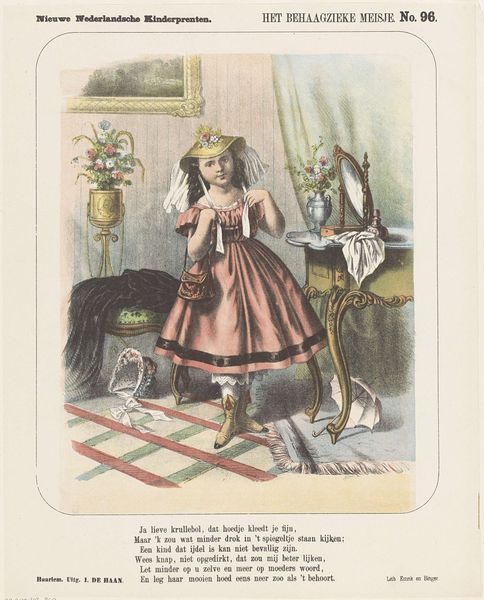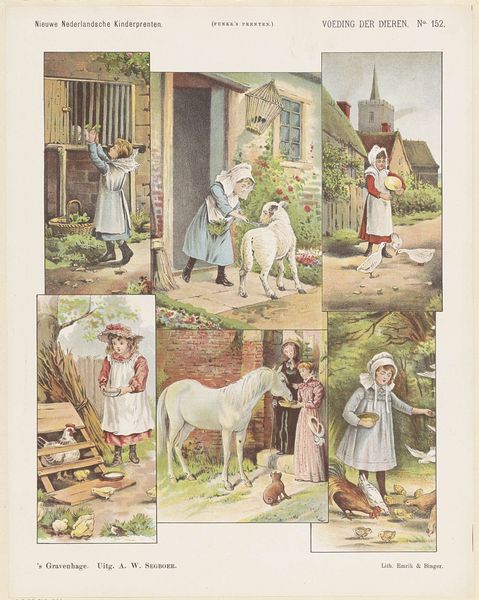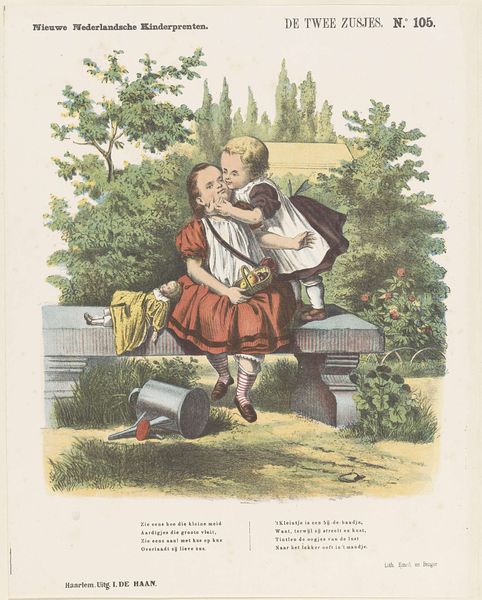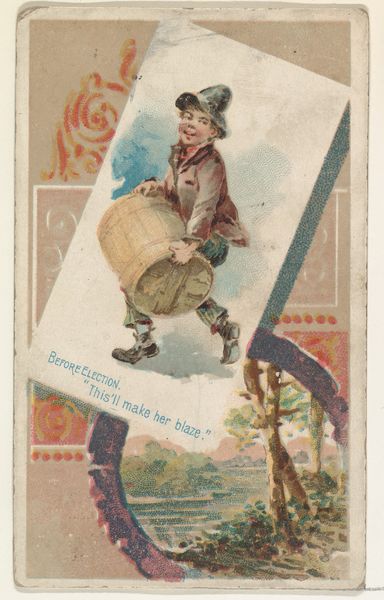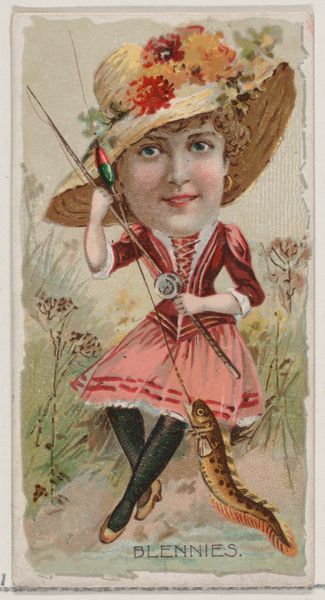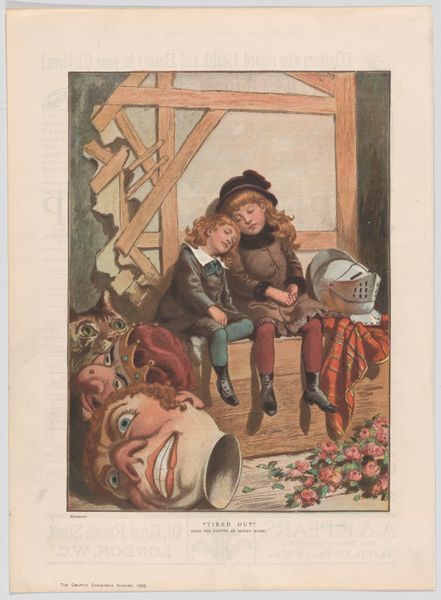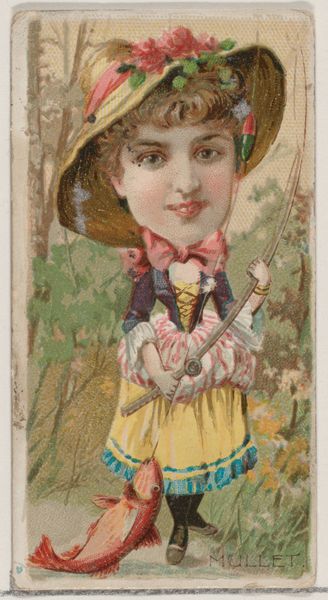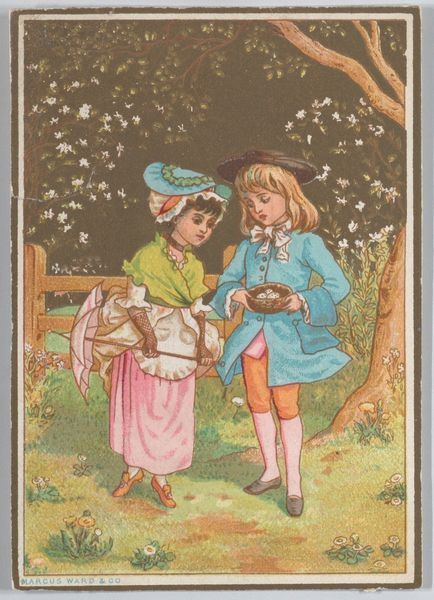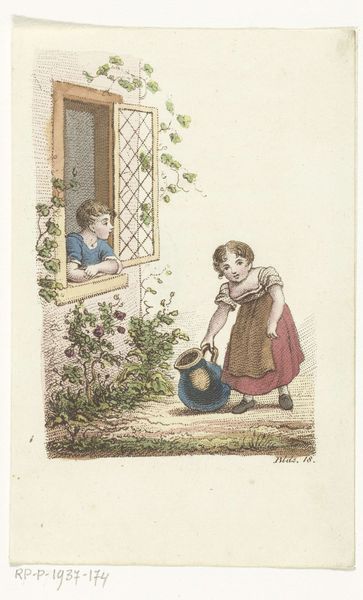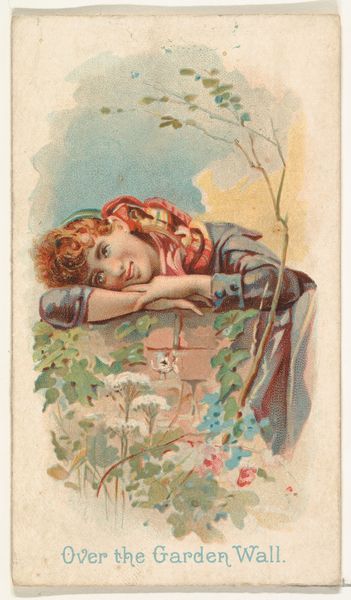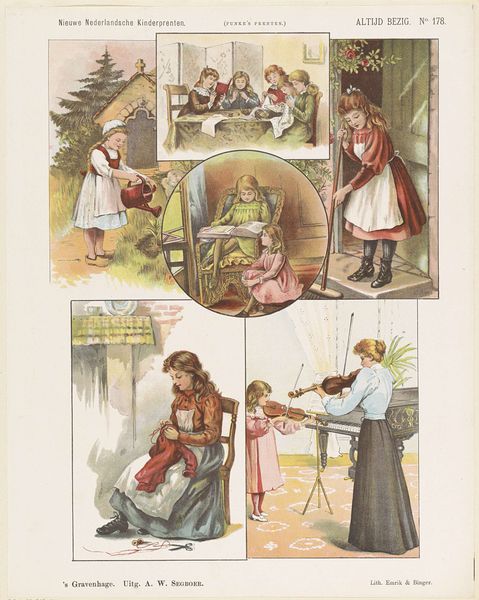
lithograph, print
#
dutch-golden-age
#
lithograph
# print
#
landscape
#
figuration
#
child
#
naïve-art
#
19th century
#
watercolour illustration
#
genre-painting
#
watercolor
Dimensions: height 440 mm, width 349 mm
Copyright: Rijks Museum: Open Domain
Curator: This unassuming lithograph, "The Boy and His Hobbyhorse," created sometime between 1875 and 1903 by Jan de Haan, presents us with much more than a simple childhood scene. Editor: Yes, it seems sweet at first glance – the naive style, the boy with his paper hat and hobbyhorse. But his expression seems almost...stern. What do you see in this piece? Curator: I see a snapshot of childhood imbued with the rigid social structures of the time. Look closely – the text accompanying the image speaks directly to "boys," perhaps subtly reinforcing societal expectations and gendered play. What does the hobbyhorse represent, and for whom? Is this idealized childhood accessible to all children, or is it limited by class and gender? Editor: That’s a fascinating point. I was so focused on the image itself, I didn’t consider the targeted audience within a broader societal context. It's interesting how the seemingly innocent imagery interacts with social hierarchies. Curator: Precisely! And think about the materials: lithography, a printmaking technique that allowed for mass production. Who had access to these prints, and what values were being subtly transmitted through them? Were they tools of education or entertainment, or something more insidious, subtly shaping young minds to accept existing power structures? Consider how "play" could be considered an activity associated with power. Editor: So you're suggesting that even something as seemingly harmless as a children's print can be a vehicle for social and political ideologies? I never considered looking at it from that angle. Curator: Absolutely. Everything, including art created for children, exists within a specific historical and social context. Questioning those contexts is key to understanding the full picture. Editor: That’s a really insightful perspective. It makes me realize how much I still have to learn about interpreting art within a broader historical framework.
Comments
No comments
Be the first to comment and join the conversation on the ultimate creative platform.
